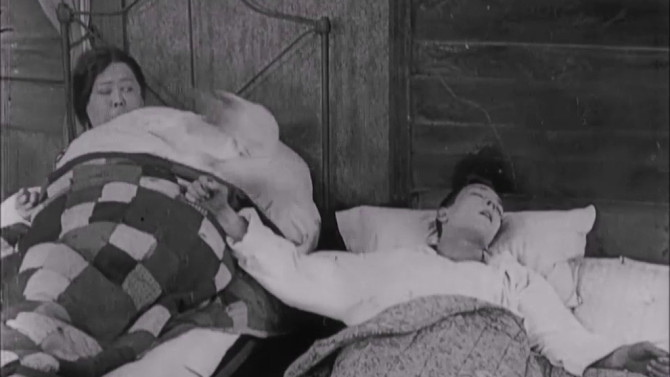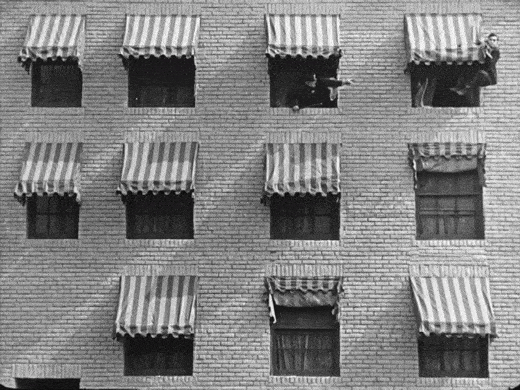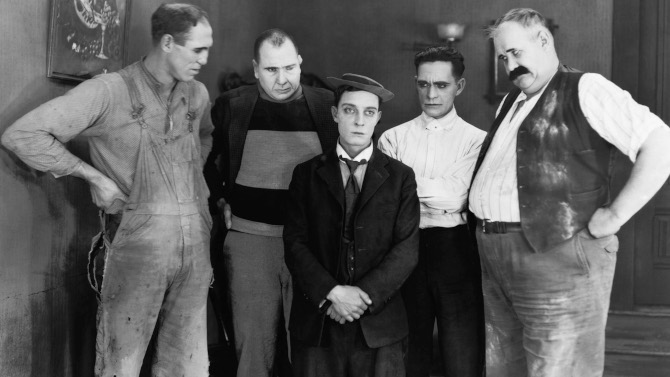‘What Could Have Been’ is a continuing look into the reels of film history, analysing movies that could have been something special, but due to problems with script, production, budgetary, or any other type of issue, did not reach its full potential.
Opening in a way only a Buster Keaton short film seems to be able to, an accidental confrontation between a mailman and the main character (leading to a letter, by chance, falling into the hands of the man, as well as a broken pane of glass as a result of the postal worker’s anger), followed by another clash between the always in the wrong place protagonist and a bullish woman – who assumes the diminutive man must have done the damage to the window. . . then throw in a Polish priest (who doesn’t speak English) making his own assumptions, and somehow, Keaton becomes Husband, and this woman, played by Kate Price, becomes Wife, in 1922’s My Wife’s Relations, written and directed by both Buster Keaton and Edward F. Cline.

At times frustrating, at others, awe-inspiring, it is one of Keaton’s least focused shorts. . . a disjointed effort that is not without its merits. Despite the rather fatefully entertaining opening premise, entertainment lags, Keaton unexpectedly finding his way into his new wife’s family. . . if you thought she was brutish, wait until you meet her physically abusive father and brothers – you’ll soon understand why you wouldn’t want to cross paths with any of them.
Of course, they soon find the above mentioned letter – a message claiming that someone has inherited 100,000 dollars (with a dirty envelope, they don’t realize it is actually not addressed to the Husband at all). Believing they are all rich, they finally start to treat Keaton a bit more kindly, giving him all of their saved money to go out and find them a home more suited to their new station in life. Leading to a conclusion where they discover they are in fact not rich – they blame Keaton once again (big shocker!). . . forcing him to show off his skill at escaping from an angry mob that just happens to be his unexpected family.

Perhaps hitting a little too close to home, Keaton had married Natalie Talmadge (sister of actresses Constance and Norma) the year before (1921), and if you’ve read anything about this time in his life, it seems like he was probably trying to work through things by way of the creative process he knew best. Often described as a “lump”, Natalie was known for two things, entertaining the rich Hollywood types and shopping – reportedly spending one third of Keaton’s weekly salary on her wardrobe. Much like in the story, she also continuously insisted that they move into more lavish homes. Also, let’s swap abrasive brothers for a domineering mother-in-law – who often resided with them (calling the shots along the way), and again, you can see another connection. In fact, two years later, after the birth of their second son, she decreed that Keaton was no longer welcome in Natalie’s bed – forced into a separate bedroom. In Keaton’s own words, “I was ruled ineligible. Lost my amateur standing. They said I was a pro. I was moved into my own bedroom.”

Though of course much of this is conjecture on my part, with a seeming inevitably, this emotionally charged short would turn out to be one of his least comedic. Yet, despite all of the family strife, you cannot take away Keaton’s undeniable feats of physical comedy. Like any other of his pictures, he falls, slides, dives, rolls, drops, and flies around the set effortlessly. By far the most impressive sequence finds a fleeing Keaton four stories up, swinging like an acrobat from ripping awnings as he makes his way down to the safety of the ground.
To me, at least, a fascinating look into the mind of an artist working his way through his own complicated marriage, the title itself, My Wife’s Relations, seems like a sly pointer to his present situation. Yet, despite the fact it might come across like a raving rant, whenever it is done by one of the greats, there is bound to be some excellent moments nonetheless. . . plus, at a brisk twenty-four minutes, you just can’t go wrong. So, it is up to you to discover if this is a match made in heaven or one to separate from, at least the choice is yours to make.

